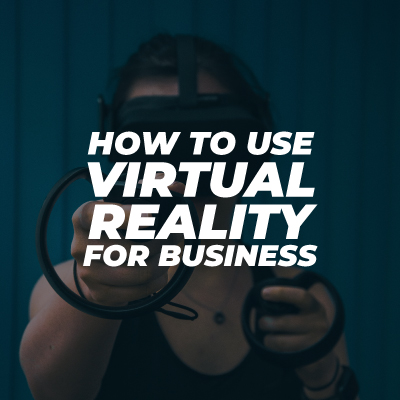

What is the number 1 best augmented reality definition?
Are you curious about augmented reality (AR) and what it entails? You’ve come to the right place. In this post, we’ll discuss augmented reality definition, how it works, and its impact on various industries.
What is Augmented Reality in simple terms?
Augmented reality (AR) refers to the integration of digital information with the user’s physical environment in real time. In other words, it overlays computer-generated content onto the user’s view of the real world.
AR is often confused with virtual reality (VR), but the two are different. While VR creates a completely immersive experience that shuts out the real world, AR adds to the user’s real-world environment.
How does Augmented Reality work?
The fundamentals of how to start the augmented reality definition topic are to understand how it works. AR works by using a camera, a screen, and sensors to detect the user’s location and movements. The camera captures the real-world environment, and the sensors track the user’s position and orientation.
The software then combines the camera feed and sensor data to create a digital overlay that is aligned with the real-world environment. This overlay can include information such as text, images, and 3D models.
AR can be experienced through various devices, including smartphones, tablets, smart glasses, and headsets.
Impact of Augmented Reality
Augmented reality has already made its mark on several industries, including gaming, education, healthcare, and marketing.
In the gaming industry, AR has been used to create immersive experiences that merge the real world with virtual elements. For example, the popular mobile game Pokemon Go uses AR to allow players to catch Pokemon in the real world.
In education, AR has been used to create interactive learning experiences that make complex concepts more accessible. For example, AR can be used to create 3D models of historical artefacts or scientific concepts.
In healthcare, AR has been used to create training simulations for medical professionals. For example, surgeons can use AR to practice procedures in a realistic but risk-free environment.
In marketing, AR has been used to create interactive advertisements that engage customers in a unique way. For example, AR can be used to create virtual try-on experiences for makeup or clothing.
What are the 3 types of AR?
There are generally three types of Augmented Reality (AR) based on their level of immersion and interaction, which are:
Marker-based AR
This type of AR uses a camera and a visual marker, which is a pre-programmed image or pattern that is recognized by the AR system. The marker triggers the display of digital content, such as 3D models, animations, or videos, on top of the marker in real time. The marker-based AR is also known as image recognition AR, and it is commonly used in advertising, gaming, and education.
Markerless AR
This type of AR uses sensors such as GPS, accelerometer, gyroscope, and digital compass to detect the user’s location and orientation in the real world. The AR system overlays digital content on top of the user’s view of the real world without the need for a visual marker. Markerless AR is also known as location-based AR or position-based AR, and it is commonly used in navigation, tourism, and retail.
Projection-based AR
This type of AR projects digital content directly onto real-world objects, such as walls, floors, or buildings, using projectors. The projection-based AR can create interactive and immersive experiences that blend the real world and digital content in real-time. This type of AR is also known as projection mapping AR or spatial augmented reality, and it is commonly used in art installations, events, and entertainment.
These three types of AR can also be combined to create more complex and advanced AR applications, depending on the specific use case and requirements.
What is the difference between VR and AR?
Virtual Reality (VR) and Augmented Reality (AR) are two different technologies that aim to enhance the user’s experience of the world, but they differ in their level of immersion and interaction.
VR creates a completely artificial environment that simulates the user’s physical presence in a virtual world. VR technology typically uses a headset with a screen or screens that cover the user’s eyes, blocking out the real world completely. The user’s movements are tracked and translated into the virtual environment, creating a sense of presence and immersion. The user can interact with the virtual environment through handheld controllers, gestures, or voice commands.
On the other hand, AR enhances the user’s real-world environment by overlaying digital content onto it. AR technology typically uses a camera and a display device such as a smartphone, tablet, or smart glasses to capture and display the real-world environment. The digital content is then added to the user’s view of the real world, creating an augmented experience. AR technology can be marker-based or markerless, and the user can interact with the digital content through touch, gestures, or voice commands.
The main difference between VR and AR is that VR creates a completely immersive virtual environment, while AR overlays digital content in the real-world environment. VR is typically used for gaming, training, and simulations, while AR is used for navigation, education, marketing, and entertainment. Understanding the difference between AR and VR helps when looking for a definitive augmented reality definition.
Why would you choose AR over VR?
Choosing between AR and VR depends on the specific use case and the desired user experience. Here are some reasons why you might choose AR over VR:
Real-world context
AR overlays digital content onto the real-world environment, which can be useful in situations where the user needs to interact with the physical world while also accessing digital information. For example, in manufacturing, AR can be used to overlay assembly instructions onto real-world equipment, making it easier for workers to follow the steps while also seeing the actual equipment.
Cost-effective
AR can be more cost-effective than VR since it typically uses devices that are already owned by many people, such as smartphones and tablets. VR, on the other hand, usually requires specialized hardware and software that can be expensive to acquire.
Mobility
AR devices such as smartphones and tablets are more portable and mobile than VR headsets, which are typically bulky and tethered to a computer or console. This makes AR more accessible in situations where the user needs to move around freely, such as in outdoor activities or public spaces.
Collaborative
AR can be more collaborative than VR since it allows multiple users to interact with the same real-world environment while also accessing digital content. For example, in architecture, AR can be used to visualize designs in a real-world setting, allowing multiple stakeholders to view and discuss the project in real time.
Marketing and retail
AR can be used to create interactive and immersive experiences for marketing and retail purposes, allowing customers to visualize products in real-world settings before purchasing. This can improve the customer experience and increase sales.
In summary, AR can be a more suitable choice over VR in situations where the real-world context is important, cost-effectiveness is a factor, mobility is required, collaboration is needed, or marketing and retail applications are desired.
What is augmented reality mostly used for?
By using the augmented reality definition we have already discussed, augmented reality (AR) can be used in a wide range of applications across various industries, including entertainment, education, healthcare, manufacturing, retail, and advertising. Here are some of the most common uses of AR:
Gaming and Entertainment
AR is widely used in gaming and entertainment, allowing users to experience immersive digital content in the real world. Popular examples include Pokemon Go and Snapchat filters.
Education
AR is used in education to enhance the learning experience, by providing interactive and engaging content that can be overlaid onto real-world objects. AR can be used to teach complex concepts, simulate experiments, and bring history to life.
Retail and Advertising
AR is used in retail and advertising to create interactive and engaging experiences for customers. AR can be used to visualize products in a real-world setting, provide virtual try-on, and offer additional product information.
Manufacturing and Industrial Applications
AR is used in manufacturing and industrial applications to improve productivity and efficiency. AR can be used to provide assembly instructions, visualize designs, and provide real-time data to workers.
Healthcare
AR is used in healthcare to provide better visualization and understanding of complex medical procedures and treatments. AR can be used to simulate surgical procedures, provide virtual training for medical professionals, and aid in patient diagnosis.
AR is used in a variety of applications to provide a more engaging and interactive user experience, improve productivity and efficiency, and enhance learning and understanding.
What problems can augmented reality solve?
Augmented reality (AR) has the potential to solve a wide range of problems across various industries. Here are some examples:
Enhancing Learning
AR can enhance the learning experience by providing interactive and engaging content that can be overlaid with real-world objects. This can help students understand complex concepts and visualize abstract ideas.
Improving Manufacturing Processes
AR has the potential to improve manufacturing processes by providing workers with real-time data and instructions. This can reduce errors, improve efficiency, and increase productivity.
Enhancing Retail Experiences
AR is a tool that enhances retail experiences by providing customers with an interactive and engaging experience. This can include virtual try-ons, providing additional product information, and visualizing products in a real-world setting.
Improving Healthcare
AR is able to improve healthcare by providing better visualization and understanding of complex medical procedures and treatments. AR can be used to simulate surgical procedures, provide virtual training for medical professionals, and aid in patient diagnosis.
Improving Safety
AR can be used to improve safety in industries such as construction, mining, and transportation by providing workers with real-time information and alerts. This can help workers avoid hazards and reduce the risk of accidents.
Enhancing Advertising
Using AR in advertising can boost engagement by providing an interactive and engaging experience for customers. This can include using AR to create interactive ads and providing customers with a unique experience that helps to create brand loyalty.
AR can help solve problems in a variety of industries by enhancing the learning experience, improving manufacturing processes, enhancing retail experiences, improving healthcare, improving safety, and enhancing advertising.
What is the biggest advantage of augmented reality?
One of the biggest advantages of augmented reality (AR) is its ability to enhance and enrich our perception of the world around us. Unlike virtual reality (VR), which creates an entirely new simulated environment, AR overlays digital information and graphics onto the real world, allowing us to interact with our surroundings in new and exciting ways. Here are some of the biggest advantages of AR:
Enhanced User Experience
AR can provide a more immersive and engaging user experience by overlaying digital content onto the real world, creating a new level of interaction and engagement.
Improved Learning and Understanding
AR can help users learn and understand complex concepts by providing interactive and engaging content that can be overlaid onto real-world objects.
Increased Efficiency and Productivity
AR can help workers in various industries by providing them with real-time data and instructions, allowing them to complete tasks more efficiently and accurately.
Enhanced Marketing and Advertising
AR can provide businesses with a unique way to market and advertise their products, by creating interactive and engaging experiences for their customers.
Improved Safety
As the augmented reality definition covers a lot of areas, one are it impacts is safety. AR can improve safety in various industries by providing workers with real-time information and alerts, helping them to avoid hazards and reduce the risk of accidents.
In summary, the biggest advantage of AR is its ability to enhance and enrich our perception of the world around us, providing a more immersive and engaging user experience, improving learning and understanding, increasing efficiency and productivity, enhancing marketing and advertising, and improving safety in various industries.
What are the pros and cons of augmented reality?
Augmented reality (AR) has several benefits and limitations. With a broad augmented reality definition, here are some of the pros and cons of AR:
Pros:
Enhanced User Experience
AR can provide an immersive and engaging user experience by overlaying digital content onto the real world.
Improved Learning
AR can help users learn and understand complex concepts by providing interactive and engaging content that can be overlaid with real-world objects.
Increased Efficiency and Productivity
AR can help workers in various industries by providing them with real-time data and instructions, allowing them to complete tasks more efficiently and accurately.
Enhanced Marketing and Advertising
AR can provide businesses with a unique way to market and advertise their products, by creating interactive and engaging experiences for their customers.
Improved Safety
AR can improve safety in various industries by providing workers with real-time information and alerts, helping them to avoid hazards and reduce the risk of accidents.
Cons:
Technical Limitations
Some AR experiences require specialized hardware and software, which can be expensive and may not be accessible to all users.
Limited Field of View
AR experiences are limited to the user’s field of view, which can be a limitation in certain applications.
Distraction
AR can be distracting, especially in situations where users need to focus on the real world, such as driving or operating heavy machinery.
Privacy Concerns
AR technology can raise privacy concerns, as it may collect and share user data.
Physical and Mental Fatigue
Extended use of AR can cause physical and mental fatigue due to the need to constantly focus on the augmented content.
In summary, AR has several benefits, including an enhanced user experience, improved learning, increased efficiency and productivity, enhanced marketing and advertising, and improved safety. However, AR also has limitations, including technical limitations, a limited field of view, distraction, privacy concerns, and physical and mental fatigue.
Conclusion
Augmented reality is a rapidly growing technology that has the potential to revolutionize various industries. By overlaying digital content in the real world, AR can create immersive experiences that enhance our understanding of the world around us. We hope this post has given you a better understanding of the augmented reality definition and its impact.


